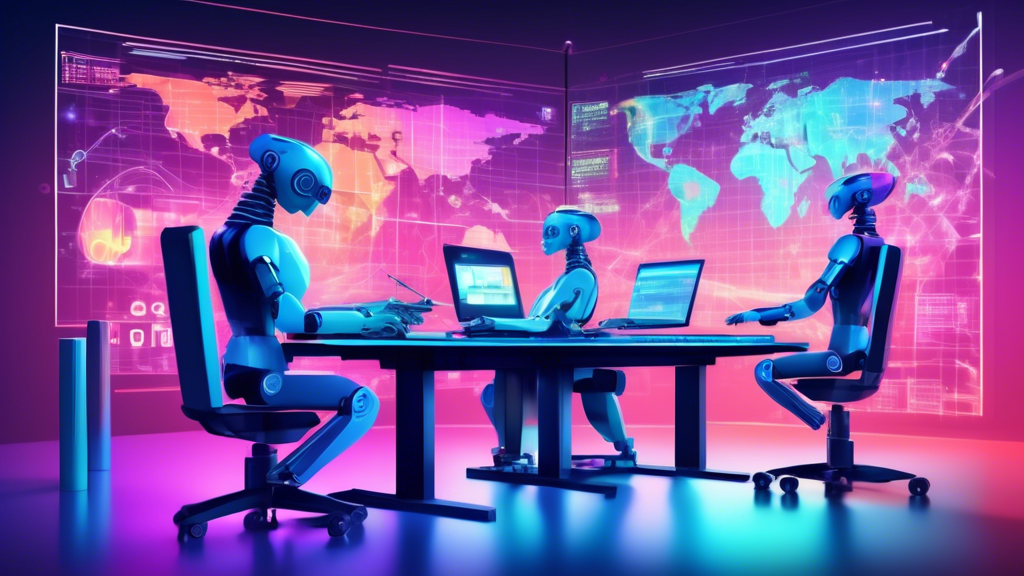Understanding GenAI and Its Impact
Generative Artificial Intelligence, commonly known as GenAI, refers to advanced AI systems capable of generating human-like text, images, and other forms of media. Leveraging machine learning models and vast datasets, GenAI tools like OpenAI’s GPT-3 and DALL-E have demonstrated remarkable abilities in creating content that mimics human creativity and intelligence.
As the media industry continues to evolve, the integration of GenAI promises not just transformations in content production but also significant financial benefits. In this article, we explore how GenAI is projected to boost profits in the media industry, examining key areas of impact and future prospects.
Automation of Content Creation
One of the most direct benefits of GenAI in the media industry is the automation of content creation processes. Traditional content production, whether for news articles, marketing copy, or visual media, often demands extensive human resources and time. GenAI can streamline these processes by generating initial drafts, providing inspiration, and even creating fully polished pieces with minimal human intervention.
This shift not only reduces operational costs by lowering the need for a large workforce but also significantly accelerates the production cycle. Media companies can now produce and publish content at a much faster rate, thus responding more swiftly to market demands and trends.
Personalization and Audience Engagement
GenAI is also poised to redefine audience engagement through personalized content. By analyzing user data and behavior, GenAI can generate tailored content that resonates more deeply with individual audience members. This level of personalization can lead to higher engagement rates, fostering a more loyal and satisfied audience base.
Moreover, personalized content can drive better ad targeting and increased click-through rates, ultimately leading to enhanced advertising revenues. In a media landscape where competition for audience attention is fierce, the ability to deliver highly relevant and engaging content can be a game-changer.
Revolutionizing Visual Media
Beyond text, GenAI has shown great potential in the realm of visual media. Tools like DALL-E enable the generation of hyper-realistic images from textual descriptions, opening up new possibilities for visual content creation. For instance, in advertising and marketing, companies can quickly produce high-quality visuals for campaigns without the need for costly photo shoots or graphic design teams.
In the entertainment sector, GenAI can assist in the creation of special effects, animation, and even virtual characters, significantly reducing production expenses and timelines. These capabilities can make high-budget projects more feasible and can allow smaller studios to produce content that competes with industry giants.
Streamlined Operations and Cost Efficiency
Aside from content creation, GenAI can enhance various operational aspects within media companies. From automating mundane tasks like data entry and administrative duties to optimizing supply chain logistics for media distribution, the integration of AI-driven solutions can yield substantial cost savings and operational efficiencies.
Furthermore, predictive analytics powered by GenAI can help media companies make more informed decisions regarding content investments, marketing strategies, and audience development. By accurately forecasting trends and consumer preferences, media companies can allocate their resources more effectively, maximizing their return on investment.
Ethical Considerations and Future Prospects
While the potential of GenAI to boost profits in the media industry is immense, it is also essential to consider the ethical implications. Issues such as data privacy, intellectual property, and the potential for AI-generated misinformation require careful regulation and oversight. Media companies must navigate these challenges responsibly to harness GenAI’s benefits without compromising ethical standards.
Looking ahead, the future of GenAI in the media industry appears promising. As AI technologies continue to advance, we can anticipate even more sophisticated tools that further blur the line between human and machine creativity. Media companies that strategically embrace these innovations are likely to gain a competitive edge, driving profitability and growth in an ever-changing landscape.



